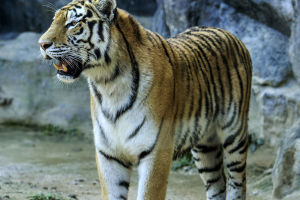Researchers have confirmed through investigations that the fur and bones preserved in a museum in Tasmania, Australia belongs to the world's last thylacine, also known as the Tasmanian tiger.
The Australian Broadcasting Corporation recently reported that the female thylacine died at the Hobart Zoo in 1936, and her remains were transported to the Tasmanian Museum, but the whereabouts of the remains were unknown.
According to the researchers, the museum once took animal skins and bones to various places for exhibitions, but due to inaccurate records of specimen information, it was not clear what the exhibits were at all.
In fact, the unknown thylacine skin bone has been kept in a cabinet in the museum, and it has only been "identified" at present. Fortunately, it is in good condition.
The thylacine is a marsupial with a dog-like body and a wolf-like head. It was once widely distributed on the Australian mainland and nearby islands.
After many years, the species was severely affected by human activities and unfortunately became extinct. Researchers said that when the thylacine died, people did not realize that the species was extinct. The zoo even offered a reward for a new thylacine, but no one could do it.
Adult thylacines are about 45-60 centimeters tall at the shoulder, 1.6-1.9 meters long including the tail, and weigh 25-35 kilograms. They have tiger stripes on their bodies and look a bit like wild dogs. They used to spread across the Australian mainland, Tasmania, New Guinea, and so on in Oceania.
The thylacine is usually nocturnal, can climb trees, and likes to hide in trees, when the prey passes by, it suddenly jumps down and jumps on the back of the prey, and the bite force of the mouth can instantly kill the prey.
Thylacine hunts at night and lives in the gravel during the day. They mostly prey on kangaroos, small mammals, and birds alone or in families. Because of the largemouth cleft, predators often crush the skulls of their prey.
They often hunt kangaroos, wallabies, or flightless birds. It doesn't run very fast, but it will pursue it until its prey is exhausted. They often bite the head of the prey to end the life of the prey.
Thylacines mate in summer and produce 3-4 liters per litter. The cubs can move independently after being fed in the mother's pouch for 3 months, but they still stay with the mother for about 10 months. They have pouches in their bellies to raise their young baby like kangaroos.
Thylacine lives in Tasmania, which is a small island in southeastern Australia. It is heart-shaped and mountainous, with plateaus in the middle and low highlands in the east.
There are more than 4,000 lakes in the Central Plateau, with a humid climate and dense forests, making it an ideal place for thylacines and other animals to survive. As a large number of immigrants came to Tasmania, people took up more land to develop agriculture and animal husbandry.
People cleared up forests, wiped out many small animals that the thylacine depended on for a living, and grazed in large quantities, which finally caused serious conflicts.
In 1948, the only lame thylacine in the world died of illness. Since then, the rare animal has not been seen again, and the animal was officially declared extinct.


